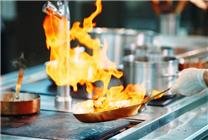The Hidden Dangers of Energy-Concentration Rings in Your Kitchen
Summary:
- Energy-concentration rings may pose serious safety risks, including carbon monoxide poisoning and explosion.
- Tests show drastic increases in carbon monoxide levels when using these devices.
- Users are urged to avoid non-factory devices on gas stoves and ensure proper ventilation while cooking.
In recent headlines, energy-concentration rings—marketed as energy-saving devices suitable for home kitchens—have sparked considerable concern. While they promise to enhance stove efficiency, growing evidence suggests these gadgets could be doing more harm than good.
Understanding Energy-Concentration Rings
Also known as energy-saving covers or fire-gathering stoves, energy-concentration rings are designed to optimize gas consumption by supposedly directing flames more effectively. Many households have embraced these products, lured by the promise of reduced energy bills. However, it is crucial to consider that these "kitchen artifacts" come with grave risks, as they both save energy and endanger health.
Alarming Results from Safety Tests
Tests conducted by firefighting departments revealed staggering results regarding the safety of these devices. When an energy-concentration ring was installed on a gas stove, the carbon monoxide levels skyrocketed. Under normal conditions, a typical stove might generate a carbon monoxide concentration of around 5 to 6 parts per million (ppm). Yet, once the energy-concentration ring was utilized, the ppm jumped to over 550.
This significant increase poses a severe threat, particularly for households with insufficient ventilation. The lack of airflow means that carbon monoxide—an odorless, colorless gas—can accumulate, leading to potentially fatal poisoning.
The Risks of Poor Ventilation
Many users might close kitchen windows while cooking to lessen heat loss or avoid outdoor distractions. However, this practice drastically increases the risk of carbon monoxide poisoning when using an energy-concentration ring. The inability to expel gases effectively can lead to symptoms like dizziness, headaches, and nausea, all of which are indicators of carbon monoxide exposure.
Guidelines for Safe Cooking Practices
In light of these dangers, authorities have issued recommendations urging consumers to refrain from using non-factory devices that could alter the performance of gas appliances. A paramount safety measure during cooking is to ensure adequate ventilation. It’s advisable to keep doors and windows open to facilitate air circulation.
If any symptoms of discomfort arise—such as dizziness or nausea—the immediate course of action must be to turn off the heat source and relocate to a well-ventilated area.
Conclusion: Prioritizing Safety Over Convenience
While the allure of reducing energy bills can be tempting, the potential for life-threatening incidents makes it essential for consumers to prioritize safety. The risks associated with energy-concentration rings far outweigh their purported benefits.
In summary, if you have these devices installed in your kitchen, consider removing them. Adopting safer cooking habits and using factory-approved appliances will not only help in maintaining energy efficiency but will also safeguard your health and well-being.
By staying informed and exercising caution, we can create a safer home environment for ourselves and our families.




